ITP (Idiopathic Thrombocytopenic Purpura) – Ayurvedic Treatment, Diet & Home Remedies
Abstract
Today’s medical system is technologically advanced, yet it lacks knowledge of the problem. We have reached a point of dissociation from the ancestral ethics that have enabled many generations before us to stay healthy for a long time as a result of rising industrialization. The majority of today’s diseases are the consequence of bad food and lifestyle behaviours that should be avoided. From here on out, we need to comprehend the problems rather than just treating the symptoms or sticking to the Autoimmune nomenclature. The current study emphasises the importance of the disease’s preventative element. According to the findings, preventative care resulted in a fundamental refinement or augmentation in the cases of Rakta pitta sufferers who had been suffering for a long time. In all cases, the data revealed that there was a significant improvement in digestive and physical condition.
Introduction
The traditional Ayurvedic literature include a thorough grasp of effective treatment techniques to the majority of modern-day health issues. ITP is one of these issues that is strengthening its roots in society (Idiopathic Thrombocytopenic Purpura).
Idiopathic Thrombocytopenic Purpura (ITP) is a kind of thrombocytopenia that causes easy and frequent bruising and bleeding. ITP is a rare autoimmune condition in which the immune system attacks platelets, which are blood-clotting cells. As a result, it is marked by a persistently low platelet count (less than 100000), as well as skin bruising or bleeding via the nose, mouth, anus, and other bodily orifices.
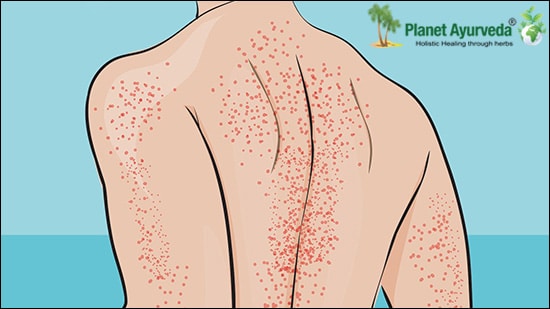
ITP is linked to “Raktapitta” in Ayurveda, a bleeding illness in which the Rakta (blood) is vitiated by the Pitta dosha and pours out of the body’s orifices. Raktapitta is a wide phrase, and “Teeryakgata Raktapitta” is nearly synonymous with ITP. Raktapitta is discussed immediately after the chapter on Jwara (fever) in Ayurvedic scriptures as arising as a result of Santapa (high body temperature), which is a Pratyatma Lakshana (clinical characteristic) of Jwara. Due to their shared causal variables, Acharya Sushruta explained this after explaining Pandu Roga (Anaemia).
Raktapitta Is The Name Given To The Ailment For The Following Reasons
Samyogaat – the Sanskrit word for “combination” or “association.” The Pitta dosha is inextricably linked to the Rakta dhatu. The vitiated Pitta dosha contaminates the Rakta dosha as a result of this relationship.
Dooshanaat – the propensity to pollute or vitiate. When the Pitta dosha is combined with the Rakta dhatu, the Rakta tends to get vitiated (blood).
Saamaanyaad Gandha Varnayoho – Pitta dosha resembles Rakta in terms of Varna (colour) and Gandha (smell), i.e., in Raktapitta, Pitta’s smell and colour are not distinguished since it is merged with increasing Rakta (blood) to take on the shape of Rakta. As a result of the homologues formed by the vitiated Pitta and Rakta doshas, the sickness is known as Raktapitta.
Raktapitta, also known as ITP, is a life-threatening medical illness that need rapid medical intervention in order to restore a normal platelet count. Thrombocytopenia frequently recurs in the modern medical system since the treatment offered to such people just elevates their platelet count and soothes their symptoms without changing the mechanism that causes the problem to begin, which has never been the goal of Ayurveda.
Now Understanding The Etiological Factors Of Raktapitta Along With Pathogenesis
Excessive ingestion of ushna (hot), amla (sour), tikshna (sharp), vidahi (corrosive food), kshara (alkali) food items, excessive anger, exposure to the sun, excessive physical exertion, and other etiological aspects of Raktapitta are all linked to an inappropriate diet (Ahara). Srotorodha (obstruction or congestion of the channels) occurs due to excess fluidity (abhishyandi) and guru (heaviness), resulting in morbidity in the Rakta dhatu. All of these circumstances cause the Pitta dosha to become vitiated, which in turn causes the blood to become vitiated. The vitiated pitta enters the circulation together with the vitiated blood and reaches the Raktavaha Srotas (blood transformation channels) emanating from organs such as the spleen and liver. Srotorodha (obstruction or congestion of the channels) causes illness in Rakta dhatu due to excess fluidity (abhishyandi) and guru (heaviness). The drava dhatu (liquid component or fluid) of other tissues such as Meda (fat), Mamsa (muscles), and others seeps out of their respective Dhatu or tissues due to Pitta’s Ushna (heat) and gets mixed with blood or Rakta.
Continuing to do so increases the amount of blood flowing through the blood arteries, putting enormous strain on them. The blood artery walls are destroyed as a result of the Pitta dosha’s pressure and heat, and blood begins to leak out via numerous orifices throughout the body.
Nasal bleed, bleeding gums, or bleeding from any other entrance of the body, Klama (weariness), Paridaha (burning feeling in the body), and bruises on the body are all clinical characteristics of Raktapitta.
The removal of pathological and physiological impurities from the body, such as metabolic waste products or toxins, as well as dietary changes, are critical for the situation’s treatment. A clinical investigation was undertaken to evaluate the effectiveness of herbal treatments and preventative elements in order to obtain a prolonged and imperishable cure in the shortest feasible time period, taking into account various components of care that have been outlined in Ayurvedic scriptures. A preventative and therapeutic management course, comprising of dietary guidelines and daily routines, was implemented for this goal.
Preventive And Purificatory Management Course
Ayurveda is a comprehensive discipline that believes that no treatment would be effective unless we follow preventative food and lifestyle guidelines. Only by following all of these recommendations will we be able to regain our health.
A diet programme, daily or seasonal regimens, and safe herbal or herbo mineral formulations were provided to the patients with rakta pitta or ITP who were involved in this study as part of the preventative and purificatory care.
Diet Programme
Many basic guidelines are contained in a diet programme, as well as certain particular food products that should be included in the diet and a set of specific food items that should be avoided. So, a diet that begins with broad directions and then includes something that must be expressly excluded from or included in the diet.
General Instructions
- Whole Fruit should be preferred over Fruit Juices
- It is best to avoid skipping meals, especially morning.
- 6 soaked almonds must be eaten on a regular basis
- Water consumption should be raised to at least 8-10 glasses per day on a regular basis.
- 12 tsp each of fennel, coriander, cumin, and carom in 3 cups water till reduced to 1 cup herbal tea
- Radish leaves, Mint leaves, Coriander leaves, Spinach leaves, Fenugreek leaves, Rocket leaves, Lettuce, Kale, Lemongrass, Wheatgrass, Radish leaves, Mint leaves, Coriander leaves, Spinach leaves, Fenugreek leaves, Rocket leaves, Lettuce, Kale, Lemongrass, Wheatgrass
- Cucumber, carrot, radish, and beetroot salad
- Papaya leaves – Boil 4-5 papaya leaves in 2 cups water for a few minutes. Allow time for it to cool. Filter it and drink it 2-3 times a day.
- Green and red juices should be consumed at least once a day.
Ideal Daily Routines
A person with Rakta pitta should follow the following daily routines:
Morning
- Go to bed early and get up as the sun rises.
- Also evacuate the bowels and bladder.
- Brush your teeth and thoroughly rinse your mouth.
- Practice deep breathing techniques.
- In the summer, massage yourself with warm oil and take a bath with tepid water; in the winter, take a bath with warm water.
- Go ahead and have your breakfast. Breakfast should never be skipped.
- Prefer food that has been freshly cooked.
- Eat in a sitting position at all times.
- Try to dine in a relaxing area free of distractions such as television, job pressure, conversing, or conducting business.
- After eating, sit quietly in vajrasana and breath deeply.
- Wait until your previous meal has been digested before eating the following meal.
- Never consume cold food or beverages after consuming hot food or beverages.
- You are now prepared to study or work.
Afternoon
- Eat your lunch, which should be light and easy to digest.
- Rest for 15 minutes after eating, but do not sleep in the afternoon.
Evening
- Rinse with lukewarm water containing Saindhav salt.
- In the summer, take a stroll after eating to help digestion, and in the winter, take a walk but only if the weather is warm and there are no frigid breezes.
- Before supper, do some deep breathing exercises.
- Establish some calming routines, such as reading books, conversing, and listening to music, for example.
Food Articles Which Are To Be Avoided And To Be Consumed
| Sr. No. | Category | To Be Avoided | To Be Consumed |
| 1. | Tastes | Pungent, Sour | Astringent, bitter, Sweet |
| 2. | Properties | Ushna (Hot), Tikshan (Sharp) | Dry, unctuous |
| 3. | Grains | White refined flour | Wheat flour, ragi, millets like Kodo Millets, Jowar (Sorghum) |
| 4. | Vegetables | Onion, Garlic, Ginger, Tomato, Eggplant, Capsicum | Bottle gourd, Round gourd, Radish, Carrot, Cucumber, Cabbage, Lettuce, Turnip, Beetroot, Broccoli, Spinach, Kale, Sweet potatoes, Peas, Green leafy vegetables, Pumpkin |
| 5. | Fruits | All citrus fruits like Orange, Lemon, Pineapple, Mango, Figs, Plum | Apple, Banana, Peach, Pear, Papaya, Kiwi, Watermelon, Muskmelon, Custard apple, Chikoo, Amla |
| 6. | Pulses | Black gram, Horse gram, black lentils, kidney beans | Yellow Lentils, Green gram, Split black gram (Moderate), Split red lentils |
| 7. | Non Vegetarian | Red meat, Pork, Lamb, Fish and Seafood | Egg white, chicken soup (Occasionally) |
| 8. | Dairy | Milk and its products, Curd, Cheese, Buttermilk, Raw milk, Yogurt | Cow’s ghee only |
| 9. | Others | Pistachio, Cashew nuts, All the seeds like Flax seeds, Sunflower, Chia | Almonds, walnuts (soaked one) |
| 10. | Liquids | Intake of Alcohol, Carbonated drinks, Canned or packaged soups, packaged fruit juices | Coconut water, Pumpkin juice, Green juice, Red juice, Carrot juice, Pomegranate juice, Beetroot juice, Aloe-Vera juice, Herbal tea, Green tea, Arjun Tea, Wheatgrass juice |
| 11. | Specific | Nil | Green Juice Red Juice (Green Juice – Coriander leaves (10-12), Mint leaves (4-5), Spinach leaves (2), Basil leaves (2-3), Wheatgrass (5-6), and Sheesham leaves (2-3) and Red Juice- Beetroot (3-4 slices), Amla (1), Apple (3-4 slices), Pomegranate (few seeds), Marigold flower petals (9-10), Rose petals (5-6), Grapes (2-3) |
Home Remedies For Situations Faced By Patients Of ITP While On Treatment
| Sr. No. | Situation | Home Remedies |
| 1. | Bleeding or blue spots |
|
| 2. | Itching | Apply neem oil twice daily |
| 3. | Dryness | Apply coconut oil twice daily |
| 4. | For increasing Platelets |
|
| 5. | For gas formation or digestion issues |
Decoction of fennel seeds, coriander seeds and cumin seeds. |
Regimen Followed By ITP Patients During Treatment Course
| Sr. No. | Morning | Pre Afternoon and Afternoon | Evening |
| 1. | Green juice on an empty stomach. | In pre afternoon, fruits and fruit juices were recommended. | Red juice |
| 2. | Soaked almonds (After peeling 4-5) | Having pomegranate decoction before lunch or carica papaya leaf juice |
Some snacks exclusively made up of semolina or vermicelli or porridge or beaten rice or soups were recommended |
| 3. | Balanced breakfast (Included wheat tortilla, cooked vegetables along with rice and lentil soups) + balanced water intake |
Balanced lunch |
Balanced dinner |
Purification Therapy
Purification therapy is done with the herbs and herbo-minerals formulations like;
- Swarn Vasant Malti Ras
- Plato Plan Capsules
- Green Essentials
- Gandhak Rasayan
- Plato Plan Syrup
- Giloy Capsules
- Kumar Kalyan Ras
- Ashwagandha Capsules
- G-Plat Capsules
- Carica Papaya Capsules
- Hemo Plan Syrup
- Spirulina Capsules
- Immune Booster
- Pitta Balance
The patient is also encouraged to drink green and red juice in addition to these formulas. We also suggested using neem oil as a topical treatment for itching. We also added Durva Swaras and Amystop-G Capsules to help with heavy bleeding during periods.
To Instantly Start Your Treatment and Relieve ITP Symptoms, you can also start with Planet Ayurveda’s Care Packs, available for different Levels and Age Groups as well.
Conclusion
The purpose of the above journal is to provide you the relevant information as per the clinical experiences of Dr. Vikram Chauhan (MD-Ayurveda) and all his team of Ayurveda Experts at Planet Ayurveda, that the modifications in Diet & Lifestyle and the detoxification or purification therapy brings out the best results in ITP patients. Along with that, adding the Ayurvedic herbs and herbo-mineral formulations pace up the recovery and also reduce the chances of recurrence of the disease for life.


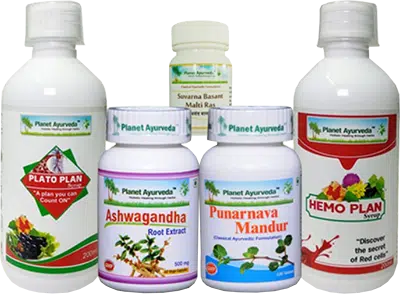
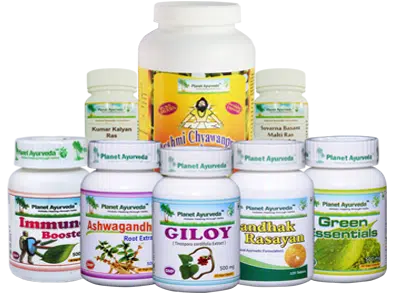
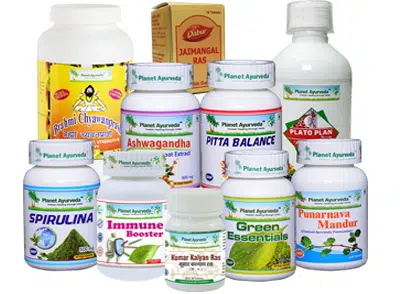
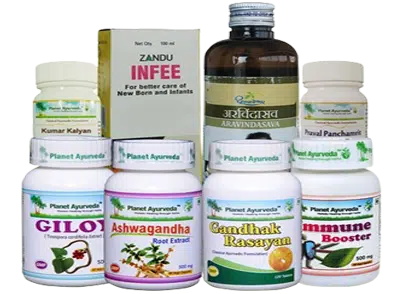
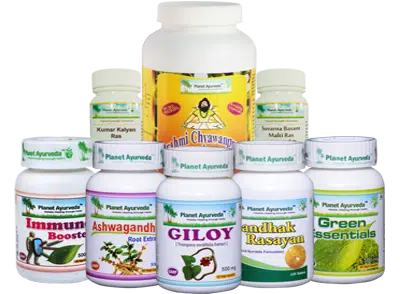


1 thought on “ITP (Idiopathic Thrombocytopenic Purpura) – Ayurvedic Treatment, Diet & Home Remedies”
Comments are closed.